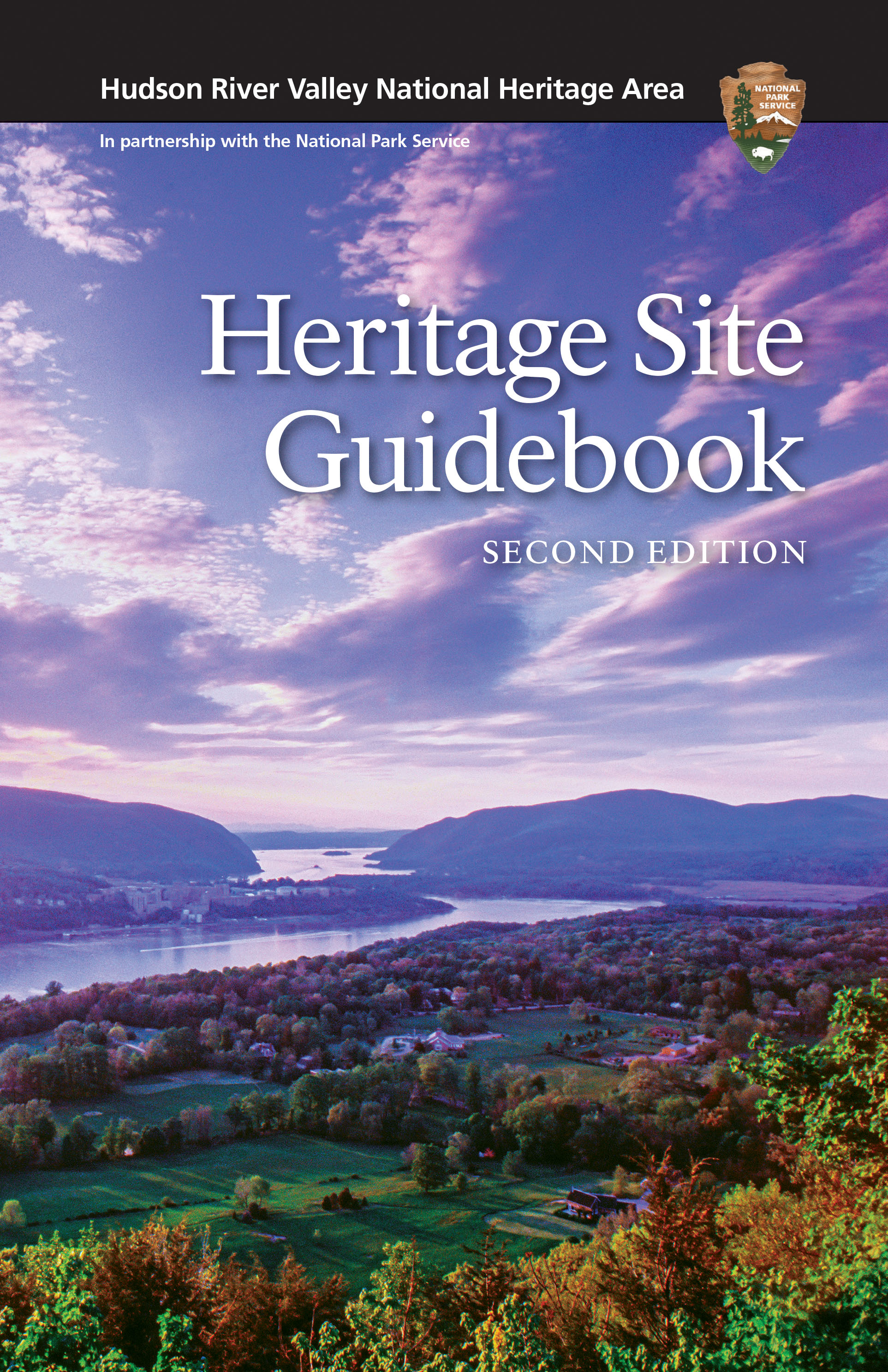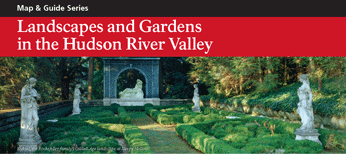Order Brochures, Guidebooks & Guides
Heritage Site Guidebook- Second Edition
$19.95
Your companion to exploring the Hudson Valley’s nationally significant historic and cultural resources!
The guidebook provides information about the Heritage Sites of the Hudson River Valley National Heritage Area. Each Heritage Site is featured on its own page which includes a site description as well as information for visiting the site (address, website, and phone number). Additionally, specific sites are identified as being family-friendly, accessible by public transportation, or part of the regional Greenway Trail System. Sites participating in the National Park Service Passport Stamp Program are also identified. Areas of Interest and category information are also included on the page for those who prefer to explore the region by topic or significance.
Heritage Sites in this guidebook are organized by proximity to one another to help you identify where nearby sites may be located. To make it easier to find a specific region, the guidebook is divided into three geographical areas from south to north.
The Hudson River Valley National Heritage Area Heritage Site Guidebook features 128 pages of information about the sites and themes of the region and costs only $19.95 plus shipping and handling.
For retail orders of the Guidebook please click here. The link will take you to our distributor, SUNY Press's website.
Thank you for your order!
For wholesale orders (you must already be on our list of approved wholesalers in order to place a wholesale order) please call 1-877-204-6073.
Brochures
There are a variety of publications about the Hudson River Valley to help you find the areas and sites that most interest you. These brochures are available for download below, or printed copies may be ordered by clicking on the order button below.
Order Printed Brochures
|
|
Maurice D. Hinchey Hudson River Valley National Heritage Area Brochure Our most popular map-guide! This brochure provides an introduction to the Heritage Sites of the valley along with a comprehensive map of the region. Explore the 150-mile valley and discover its rich scenic, cultural, and recreational resources from Troy to Yonkers. |
|
|
Dutch and Native American Heritage in the Hudson River Valley Prior to European arrival, the Hudson River Valley was home to many Native American societies—from the Munsee and Lenape of the lower valley to the Mohicans and Mohawks of the upper valley. Early settlers to the Dutch colony, about one-half of whom were ethnically Dutch, learned important survival techniques from Native Americans and adapted many of their diplomatic, cultural, and social practices. Manhattan retains the Munsee Indian name Mannahatta, often translated as “the island of many hills” and alternatively translated as “the place to gather thickets to make bows.” The Mohawk were the easternmost branch of the Six Nations of the Haudenosaunee Confederacy (also known as the Iroquois), whose structure some say inspired the United States’ federalist government system. Trade with the Dutch gave Native Americans access to fabrics, glass beads, and steel tools, but exposed them to decimating diseases. As the Dutch colony grew, so did conflicts. Many tribes were forced to migrate west by the eighteenth century. Today, New York State is home to eight federally-recognized tribes and over 220,000 people who self-identify as American Indian or Alaska Native.
|
|
|
19th Century Painters: Hudson River School From the 1820s through the end of the century, the natural wonders of the Hudson River Valley kindled one of the most significant achievements in the nation's cultural history-the development of a style of painting that expressed the American character. In 1825 the dramatic scenery of the Hudson River Valley inspired a young artist, Thomas Cole, to create the first paintings of the American landscape in the new, Romantic style. What began as a casual group of painters eager to capture the beauty of upstate New York grew to become a school of artists who traveled the country and even the world producing some of the masterpieces of American art. |
|
|
Architectural Traditions in the Hudson River Valley The Hudson River Valley is known not only for its natural beauty but its architectural heritage. It was here that architects developed early residential styles, created mountain resorts, and designed spectacular riverside estates. America's first travel guides touted these architectural wonders 150 years ago. The invitation still holds: Visit the farmhouse of Dutch and French Huguenot settlers; tour the mansions and grounds along the river; and marvel at the creations of some of the country's greatest 19th-century architects. |
|
|
Landscapes and Gardens in the Hudson River Valley The spirit of the Hudson River Valley lives not only in art and legend but also in the delicate balance of natural and human forces that have shaped the land. Together they create a special place where gardens and landscapes are both inspired and inspiring. Here you will find the views and vision that stimulated a national artistic movement, a model for land conservation practices, and historic gardens that shaped the American landscape design profession. |
|
|
The American Revolution in the Hudson River Valley The Hudson River Valley played a pivotal role in determining the outcome of the Revolutionary War. Here, Americans stymied British attempts in 1776-1783 to control the riverway and sever New England from the rest of the colonies. Here, the Patriots boycotted British teas and other goods, accepted the Declaration of Independence, created the State of New York, and kept a sharp eye - or a heavy hand - on their Loyalist neighbors. Here along the Hudson, Americans stood fast and, after the turning point battles at Saratoga, set the stage for their ultimate victory at Yorktown and the British evacuation of North America south of Canada. |
"Windows on History" Train Guide
The wealth of historic, c ultural, and natural resources in the Hudson River Valley affords every traveler the opportunity for a unique and memorable experience. One of the best opportunities for a memorable experience is Amtrak’s passenger rail service between New York City’s Pennsylvania Station and the Capital District’s Albany-Rensselaer Station. Traveling along the eastern bank of the Hudson River, this route offers rare and magnificent views of some of the most significant state and national resources. This route is not only one of the most popular in the nation, but the most highly traveled route in New York State, attracting a wide ridership.
ultural, and natural resources in the Hudson River Valley affords every traveler the opportunity for a unique and memorable experience. One of the best opportunities for a memorable experience is Amtrak’s passenger rail service between New York City’s Pennsylvania Station and the Capital District’s Albany-Rensselaer Station. Traveling along the eastern bank of the Hudson River, this route offers rare and magnificent views of some of the most significant state and national resources. This route is not only one of the most popular in the nation, but the most highly traveled route in New York State, attracting a wide ridership.
With this in mind, the Hudson River Valley National Heritage Area is pleased to present “Windows on History: Exploring the Hudson River Valley National Heritage Area.” This guide was produced in partnership with New York By Rail and I Love New York.
Through narratives, historic depictions, and photos taken from the perspective of passengers on the train, this guide educates rail passengers traveling through the Hudson River Valley about the resources they see out their windows. This guide provides information about the surrounding communities and historic sites located nearby as well as an account of transportation history in the region. As you learn more about the nationally-significant resources of the Hudson River Valley, you will be encouraged to explore the region and take advantage of all it has to offer.








